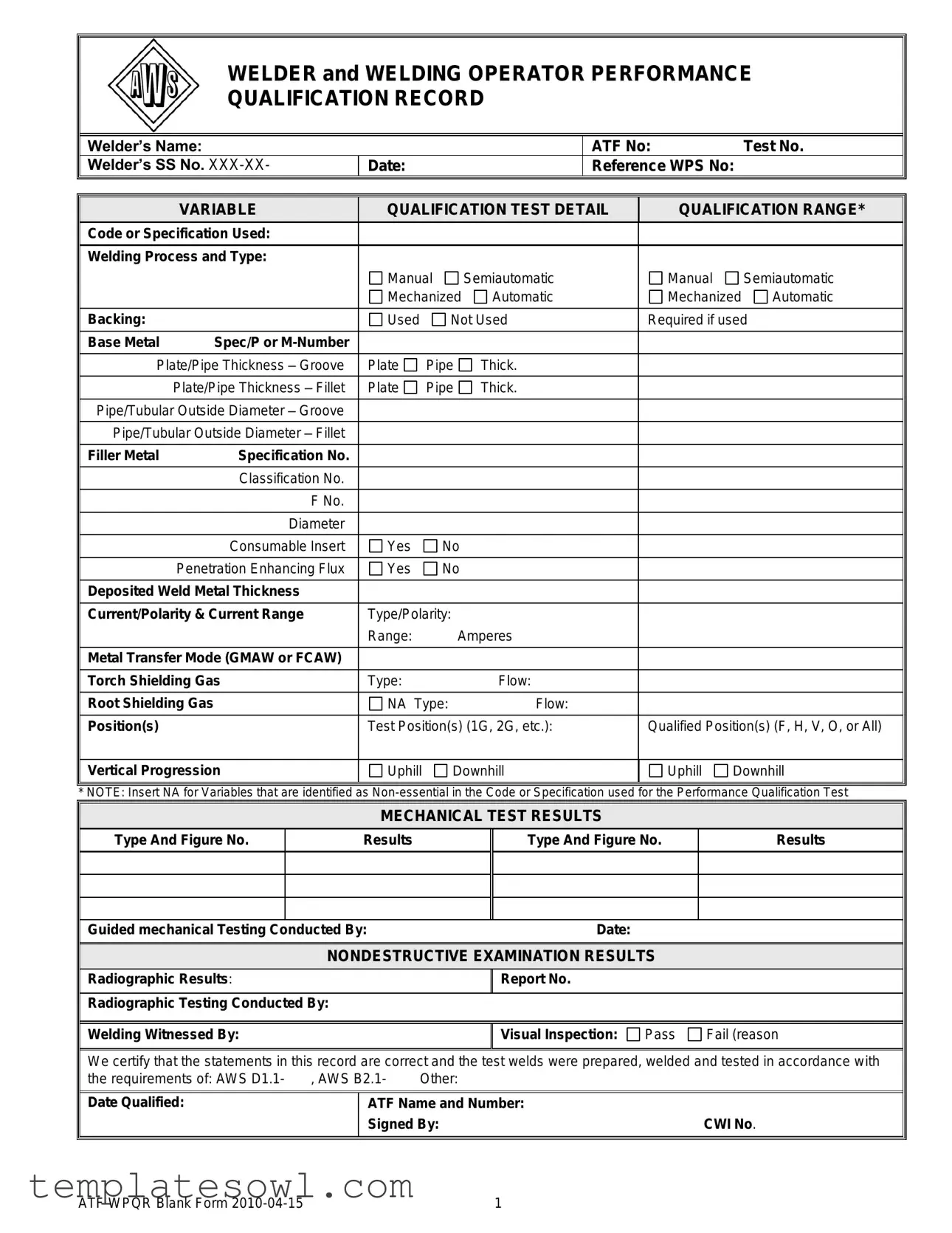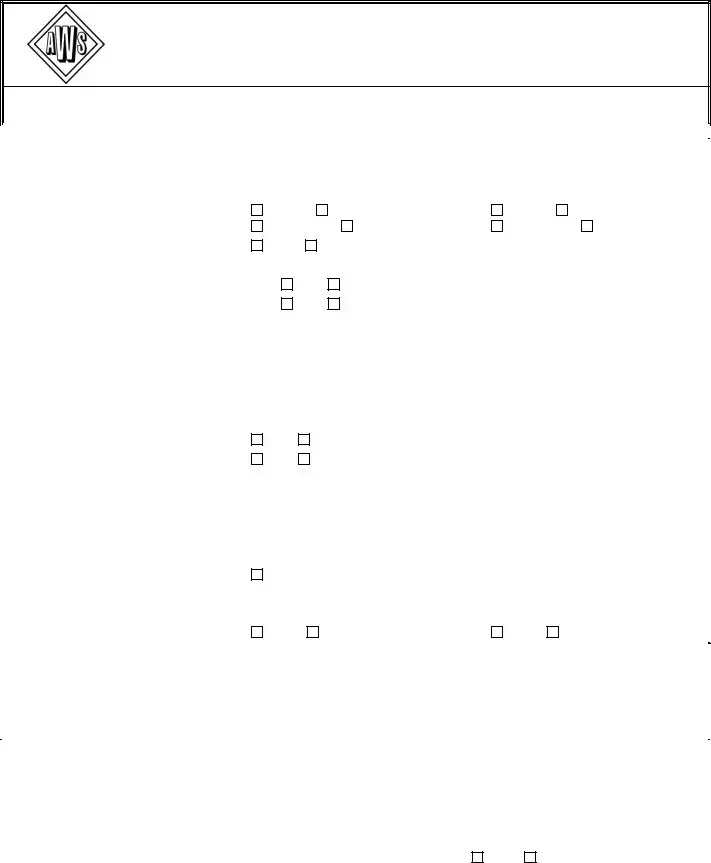What is the purpose of the Welder Performance Qualification Record form?
The Welder Performance Qualification Record (WPQR) form is a crucial document used to verify that a welder has the necessary skills and qualifications to perform specific welding processes. It serves as an official record of a welder’s abilities, detailing the different types of welding processes they can perform, the materials they are qualified to work with, and the test positions in which they can weld. By documenting this information, the WPQR helps ensure that welders meet industry standards and comply with safety regulations.
Who needs to complete the WPQR form?
The WPQR form must be completed by welders and welding operators who want to demonstrate their qualifications. It is typically filled out after the welder successfully completes a performance qualification test. Employers, welding inspectors, or certified welding personnel often oversee this process to ensure that the welders meet the necessary criteria set forth by industry standards and specifications.
What information is recorded on the WPQR form?
The WPQR form includes essential personal information about the welder, such as their name and identification numbers. It also details the qualifications based on specific welding processes, materials, and the testing methods used. Key fields encompass the level of welding processes (manual, semiautomatic, automatic), base metal specifications, the positions in which the welder is qualified to work, and results from both mechanical tests and nondestructive examination results.
How long does the qualification last?
The qualification period typically depends on the governing body and the specific regulations or codes being followed. Most certifications, including those conducted under AWS guidelines, require periodic requalification or have specific time frames for validity. It is essential for welders and employers to keep track of these requirements to maintain compliance and ensure ongoing qualification.
What is the significance of non-destructive examination results in the WPQR?
Non-destructive examination (NDE) results hold significant value in the WPQR. These results provide assurance that the welds meet quality and safety standards without affecting the integrity of the welded material. The inclusion of NDE results enhances the reliability of the welder’s qualifications by demonstrating that their work has been inspected and passes required quality assessments.
Can the WPQR be modified after it is completed?
Once the WPQR form is completed and signed, it should not be modified without proper authorization. Any changes could compromise the integrity of the document. If corrections or updates are necessary, it is recommended to create an official amendment or supplementary documentation that outlines the changes, ensuring that the integrity of the original record remains intact.

